This 9 day Best of Bhutan tour is a complete western Bhutan experience covering the province of Paro, Thimphu, Punakha and off the beaten Phobjikha valley in Wangdiphodrang. Our guide will help you uncover the country’s rich cultural heritage as you visit ancient monasteries, dzongs and chortens. While in Phobjikha valley there are beautiful short and easy long hikes that will connect you to the nature. An evening soak in the traditional hot stone bath at the farm house will help rejuvenate one’s soul.
Welcome to the land of the thunder Dragon. We invite you to experience the beauty, culture and spirituality of Bhutan with us. We wish you a beautiful journey thru our kingdom.
Day 1: Arrive at Paro International Airport – Transfer to Thimphu.
Distance: 54 km
Driving time: 1hr 20mins drive.
Altitude in Thimphu: 2400 m / 7874 ft above sea level.
Our pilgrimage begins with a journey towards east into the booming metropolis of Thimphu. Situated at an altitude of 2400 m it is home to 140,000 Bhutanese. Thimphu being the capital of Bhutan, offers unique opportunities to explore the Bhutanese culture, lifestyle and traditions in depth.
We invite you to see the sights of the Kingdom’s capital with us. Below we have listed some of the experiences that we enjoy the most.
Roughly 30-minute drive from the airport towards Thimphu we will stop to have a view of Tachogang Monastery. The temple of excellent horse built by Thangthong Gyalpo (Iron chain builder in Bhutan) in 15th century. Down by the river we can see one of his Iron Bridge. You can take a walk and cross the suspension bridge built just next to the Iron bridge to have a closer look.
Once we arrive Thimphu, we will spend our time circumambulating the sacred National Memorial Chorten. This is a Tibetan-style chorten built in 1974 in memory of the late King Jigme Dorji Wangchuk who passed away in 1972. It is one of the most visible religious structures in town and for many people it is the focus of daily worship. Remember to walk around the Chorten at least once to gain merit and good luck.
Next, we will drive up a ridge to visit the Biggest Buddha Statue at Kunesel Phodrang in Thimphu. This statue of Buddha measures 52 meters. It is one of the largest statues in the world. The statue is made of bronze and is gilded in gold. There are many smaller Buddha statues placed inside.
Next, we will take in more of kingdom’s rich culture at the Folk Heritage Museum. The museum is a restored three story traditional rammed mud and timber house inaugurated as a museum by Her Majesty the Queen Ashi Dorji Wangmo Wangchuk in 2001. It showcases the traditional artifacts used now and, in the past, which helps connect people to the Bhutanese rural life.
Typical Bhutanese Lunch at the Museum restaurant.
Next, we will stretch by hiking to the ancient Wangditse Goemba. It is an easy hike thru pine forest and with good overview of King Jigme’s palace. (2 hrs. hike) Wangditse Goemba was founded in 1750 by the attendants of Bhutan’s 8th desi, Yeshey Rabgye. It was renovated in 2002 after it suffered serious damage in a windstorm in 1995. The monastery is further undergoing major renovation after it was destroyed by the earthquake in 2011.
On our way back, we will stop to visit the Mini Zoo. The zoo used to exhibit various indigenous wild animals, which were later released back into the wild by order of the 4th King who declared that such a facility was not in keeping with the Bhutan’s environmental and religious convictions. The zoo now only features the Takin, which is the national animal of Bhutan. The Takins were originally released with the rest of the animals, but had become so familiar with people that they were found wandering around Thimphu looking for food. The only solution was to put them back into captivity.
In the evening you can stroll in the town, visit the Local Craft market just above the Textile museum and visit local handicraft shops.
Overnight in Thimphu.
Day 2: Thimphu.
After Breakfast, a 40-minute drive from the town, takes you to the starting point for the walk to Cheri Monastery which is believed to have been visited by Guru Rinpoche in the 8th century. After crossing a bridge, the main trail to Cheri zigzags upwards to a chorten. Remember to pass this in clock-wise direction as a sign of respect. Shortly after passing a few buildings, you will see the temple on your left. Sometimes you might spot goral (wild goat) jand Grey langur (monkey) umping around the cliffs nearby. Cheri monastery is considered very sacred as it contains the remains of Tempi Nima, the father of the first Zhabdrung of Bhutan, and beautiful frescoes of Buddhist saints. Zhabdrung Ngawang Namgyal built it in 1620 in memory of his father. Parts were later converted to a nunnery and a few nuns still live here today.
Time: 1.5 – 2 hours. Difficulty level – Moderate.
After picnic lunch by the river side we will hike to the adjacent Tango monastery.
Tango Monastery is a 15th century temple unique in its architecture. When the monastery was presented to Zhabdrung Ngawang Namgyal in 1617, a battle was going on between the Tibetans and Bhutanese. The Zhabdrung therefore meditated in a cave at Tango as a result of which the invading forces were defeated. Today you will see a large stone in the shape of a horse head by the cave which is supposed to frighten the enemies of Buddhism.
After the monastery we will drive to visit Tashichhoe Dzong and have glimpse king Jigme’s Palace. The Dzong is popularly known as Thimphu Dzong. It is the seat of the government and the center of all religious affairs of the Kingdom. It houses the office and the throne room of His Majesty King Jigme Khesar Namgyal Wangchuck.
Overnight in Thimphu.
Day 3: Transfer to Punakha.
Distance: 71km
Driving time: 3 hrs drive.
Altitude in Punakha 1300 m / 4264 ft above sea level.
The sub-tropical valleys of Punakha and the surrounding mountain sides offer a large variety of attractive places to explore and discover monasteries and the most impressive Dzong in the country.
Before we drive on the national east – west highway we will briefly visit Semtokha Dzong. The oldest dzong in the country (built in 1629) stands on a soaring ridge 5 km away from Thimphu. Its strategic position is evident as it controls all the approaches to and from Thimphu. Notice the contrast of traditional and modern as you enter the dzong grounds; the white painted dzong with the growing city in the background and the newly constructed 52 m tall Buddha statue perched on the hill right behind.
After the visit we will continue our journey towards east. Roughly 50 mins drive we will stop to stretch by hiking to Hongtso Goemba (1 hrs hike). The Goemba was built in 1525 by the older brother of Drukpa Kuenlay, the Divine mad man. It is a two-story traditional Bhutanese building where the main alter room has an enormous statue of Guru Tshoki Dorji in a standing posture together with his spiritual consort. Inside we can view very old wall paintings.
10 mins drive after the end of hike we will reach Dochula Pass (3000 meters). If weather permits, we will have great view of the extended eastern Himalayas in Bhutan.
We will stop at the cafeteria for hot lunch with far away mountain views. At the pass we will visit Druk Wangyel Monastery located just few meters above the cafeteria.
After Picnic lunch by the riverside we will visit the stunning Punakha Dzong. The Dzong is considered one of the most important and also one of the most beautiful Dzongs in the Kingdom. It was built by Zhabdrung in 1637, and was the seat of the government every winter until Thimphu was established as the permanent capital in 1955. It is still the winter residence of the Central Monastic Body.
Next, we will travel up the valley north and cross the Mo Chhu to hike up and pay respect to the grand Khamsum Yuelley Namgyal Chorten, The Chorten is 30 meters (100 feet) tall and can be seen in the distance when driving or walking up from the footbridge towards the lodge. The three-leveled chorten took eight and a half years to build and was consecrated in 1999. Dedicated to the Fifth King, it was built to remove negative forces and to provide peace, stability, and harmony in an ever- changing world. It is therefore filled with every form of colorful protector imaginable.
Overnight in Punakha.
Day 4: Punakha.
Punakha Dzong to Giligang past Samdingkha to Phochhu Zam:
Time: Total 5 – 6 hours. Approximately 12 km.
Difficulty level – Strenuous.
You will start the hike from the Changyul bridge next to the Punakha Dzong. The trail climbs slowly upwards on the mountainside all the way up top to Giligang monastery. During the climb you will have great view of the Mochu side. Once on top of the hill after reaching the monastery you will have stunning view of both side of the valleys. There you can take a well-deserved rest and enjoy your picnic lunch. If you are lucky, the charming old couple who resides in the temple might offer some ngaja and join you for some food and good laughs. Giligang Temple is a 300-years old privately-owned monastery which has been taken care of by the same family for generations. Aum Kortem and Ap Sangay Wangchuk are now in their seventies and have resided in the monastery for more than 50 years. They live off the money they make from growing and selling chilies and other vegetables, and are always very excited to welcome guests. It is believed that once upon a time Drukpa Kuenlay was complaining to his brother Ngawang Chogyel that he could never get hold of him because he was always meditating. They started a debate where Drukpa Kuenlay wanted his brother to prove the results of all his time spent in meditation. Ngawang Chogyel instructed Drukpa Kinley to climb to Giligang and wait to see his brother’s extraordinary capabilities. Ngawang Chogyel then threw a cat through a hole in the hill in Sonagasa, in the bottom of the valley. The cat came flying through the hole in a tree just below where Giligang is now located. This is how the place got its name, gili meaning cat and gang meaning hill.
From Giligang you continue on top of the mountain ridge and descend slowly on the Mo Chuu side, whereas this trail falls quite steeply down to the Po Chhu side and then continues along the river towards the dzong. If you, in addition to experiencing Giligang temple, also want to visit rural village communities, this route is ideal. When walking down from Giligang, the views of the terraced rice fields, ruins and the small villages below and across the river are extremely picturesque. After the initial steep decline, the path flattens out and continues across the rice fields to Nawakha village, past the grounds of the local community school and lastly through Tempakha village before intersecting with the Department of Tourism Biking Trail. If you wish to stop your hike in Samdingkha, you can follow the path leading left across the suspension bridge where your car can be waiting for you. If you still have more energy left, the opposite trail will take you along the river’s right side through forests and along cliffs all the way to Bhutan’s longest suspension bridge in Pho chhu Zam. Your car will pick you up from the other side of the bridge.
Overnight in Punakha.
Day 5: Transfer to Phobjikha valley.
Distance: 87 km
Driving time: 3 hrs drive.
Altitude in Phobjikha: 2900 m / 9514 ft above sea level.
Phobjikha Valley is one of the most stunning areas in the country. The wide flat valley without any trees after the hard climb through dense forest is an extremely rare experience in Bhutan. In contrast to some parts of Bhutan, where modern development is already very apparent, Phobjikha is a place with natural beauty.
Before driving through the fir, juniper and rhododendron into the glacier valley of Phobjikha, roughly after 30 minutes’ drive we will briefly visit Wangdiphodrang Dzong which was burnt down by fire in 2012. The original Dzong was built in the 17th century by Zhabdrung (the one who unified Bhutan).
After the visit we will continue the drive up until the neck of Pelela pass (3300 meters) where we will cut our way to take a diversion into the glacier valley filled with dwarf bamboos. The valley is one of the most important wildlife preserve in the country, because of the large flock of black necked cranes that migrates from Tibet in the winter.
In the valley we will visit the famous 16th century Gangtey Goemba that overlooks the large green expanse of the valley. The monastery is surrounded by a large village inhabited mainly be the families of the Gomchens (lay monk) who take care of the monastery.
After the visit we will stretch by hiking the Gangtey Nature Trail, two hours of easy walking. This pleasurable walk will give you a nice feel of Phobjikha valley. From the small hilltop overlooking Gangtey Goemba, you head downhill through flower meadows to Semchubara village and from here through beautiful forests and into the open valley. The trail ends after the Khewa Lhakhang. The lone monastery in the valley.
On our way, back to the hotel we will stop to visit the Crane observation and education center. There we can watch the short documentary on the magnificent black necked crane.
Overnight in Phobjikha valley.
Day 6: Phobjikha valley.
Longtey Hike: Time: 4 hours walk back towards Gangtey Gompa.
Difficulty level –Moderate
If you are looking for a picturesque hike through some of the most beautiful parts of Gangtey, this is the one. It is a 40 minutes’ drive from Phobjikha valley to the starting point in Longtey village on the East-West highway. Start by walking downwards following the path to the right of the road. The path will lead through bush bamboo towards a small cluster of village houses. There are beautifully colored rhododendron forests on both sides of the valley, and in the winter months, yaks graze in the area. Continue straight through the village upwards until you reach the start of mystifying old-growth rhododendron forest. For the next two hours or so, you might feel like you are in the settings of Lord of The Rings surrounded by tall old trees which appear to be living creatures around you. The last part through the forest is slightly steeper uphill until you reach the pass with impressive views of the Gangtey Goemba, the Shedra, the lodge and the rest of the valley. This is a nice place for picnic lunch before you continue on the path as it slopes down the valley towards the idyllic Kumbu village.
Overnight at Phobjikha valley.
Day 7: Transfer to Paro.
Distance: 189 km
Driving time: 7 hrs drive.
Altitude in Paro: 2300 m / 7544 ft above sea level.
The journey west takes us back to Paro valley crossing Wangdiphodrang province and then climbing back to the Dochula Mountain Pass.
One of the most rejuvenating and picturesque hikes during your kora journey is the Dochula to Lungchutse and Trashigang Goemba, not only the hike itself is beautiful, but the 360° view from Lungchutse temple is one of the best you will get of the Himalayan mountain range.
You will start your hike from the large chorten in the middle of Dochula, the pass between Thimphu and Punakha at 10,300 ft / 3,140 m above sea level. From here the trail slowly climbs a ridge through a forest of hemlock, birch and rhododendrons until reaching an open meadow. Again, you will enter into forest of moss-covered rhododendrons, gigantic hemlocks, junipers, and bamboo undergrowth. A small trail leads you the last 160 ft / 50 meters past a row of fluttering prayer flags up to Lungchutse temple.
On clear days, the view from the temple is fantastic! You will have a 360° view of the Himalayas including views of Jumolhari (24,000 ft / 7,314 m), Masang Gang in the region of Laya (23,500 ft / 7,158 m), Zongophu Gang – a Table Mountain that dominates the isolated region of Lunana (23,160 ft / 7,060 m) and Gangkhar Puensum, the highest peak in Bhutan and the highest unclimbed peak in the world (24,600 ft / 7,497 m). You can also see Gasa Dzong, as a tiny white speck in a sea of green almost 31 miles / 50 kilometres to the north.
A trail to the left just 490 ft / 150 m below Lungchutse, leads to Trashigang village and temple. It slowly descends through spruce, rhododendron, hemlock and juniper forest. The village’s many dogs will warn the villagers about your arrival as you walk through the settlement down to the temple. It is nice to have lunch around the chorten in the temple’s courtyard while watching the monks in their daily endeavors.
The trail leading down from the front of the temple zigzags quite steeply down the side of the mountain until reaching a farm road which takes you up to the main road. Unless you have had enough hiking for one day, you might also want to visit Hongtsho village temple on the hill side to the right on the opposite side of the road. This involves a 30 – 60-minute short hike up through the little village and back down again the same way.
Trashigang Goemba was built in 1786 by the 12th Je Khenpo. It is an important mediation centre, and houses statues of several Je Khenpos who meditated here.
After the hike we will continue our journey side stepping Thimphu city and following wang Chhu river and and Pa Chhu rivers before arriving in Paro.
Overnight in Paro.
Day 8: Paro.
Today’s exploration of Paro valley begins with an early hike to Taktsang Goemba (Tiger’s Nest monastery) 4-5 hrs. hike.
The monastery is one of Bhutan’s most revered monuments. It literally hangs off the face of a cliff 900 meters above the valley floor. The legend states that Guru Rinpoche flew into Paro valley on a mythical tigress and meditated in a cave where Taktsang stands today. The Taktshang Goempa is built around the cave. The hike offers spectacular views of the Goempa and the valley below. Horses or mules can be arranged on request to help lighten the journey.
Visit the auspicious Kyichu Monastery. The seventh century monastery is one of the oldest and most sacred temples in the Kingdom. The Tibetan King, Songsten Gampo ordered the establishment of monasteries in the Himalayan region to subdue evil spirits and to spread Buddhism. Of the 108 monasteries two were built in Bhutan namely the Kyichu Lhakhang and the Jampa Lhakhang in Bumthang.
It is a must to take a stroll in the town for all visitors who come to this valley. The town dates back from 1985 and its lined up by souvenir shops and café. If you are in for a good cup of café, stop at Mountain Café Roastery. They serve the best coffee in Bhutan.
The hike to the famous Taktsang Goemba is a great finish to this day of cultural immersion and your journey to this ancient kingdom of BHUTAN.
Overnight in Paro.
Day 9: International Departure.

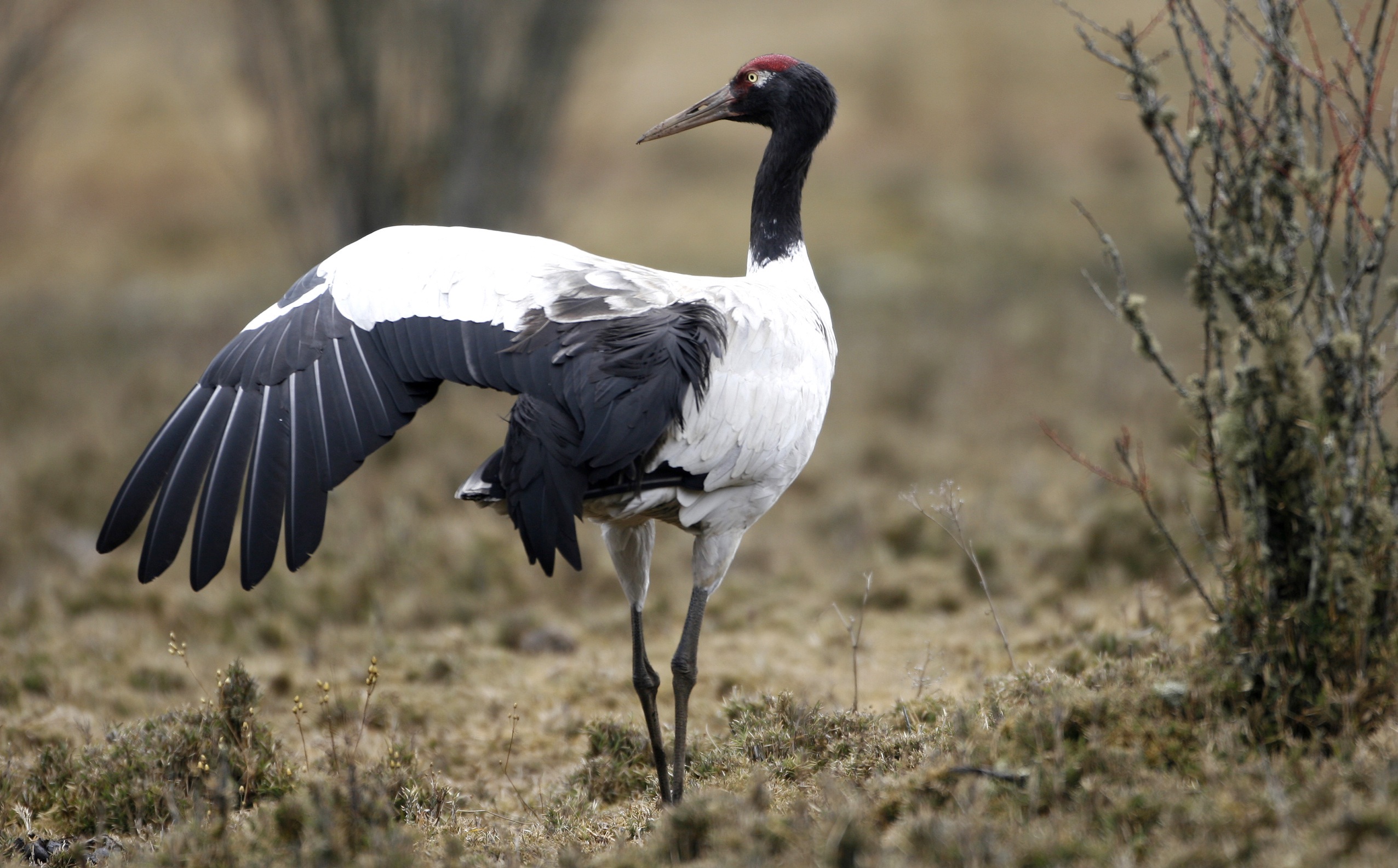
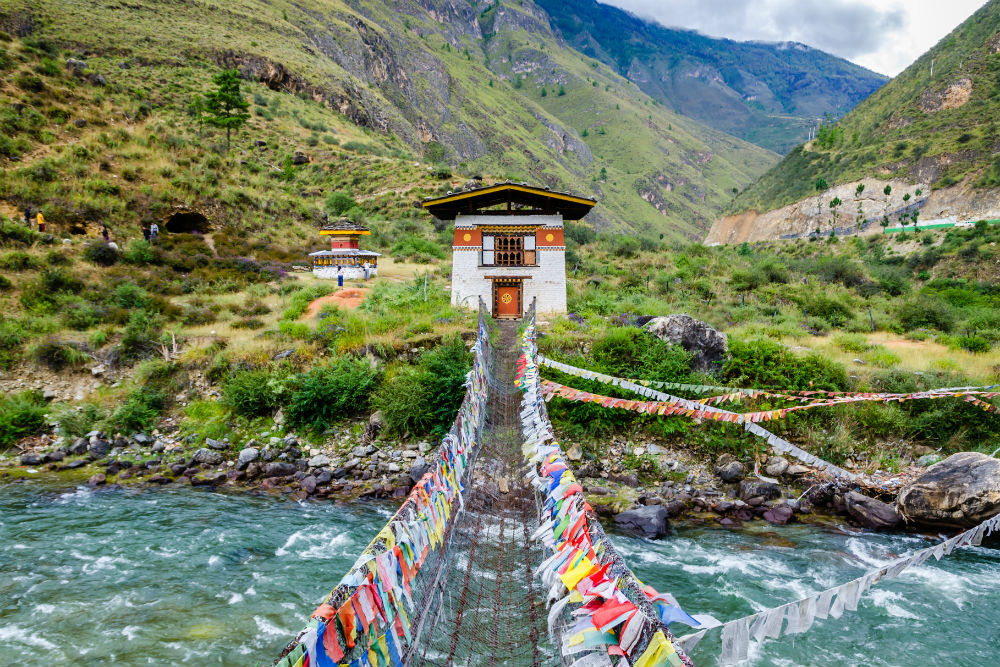
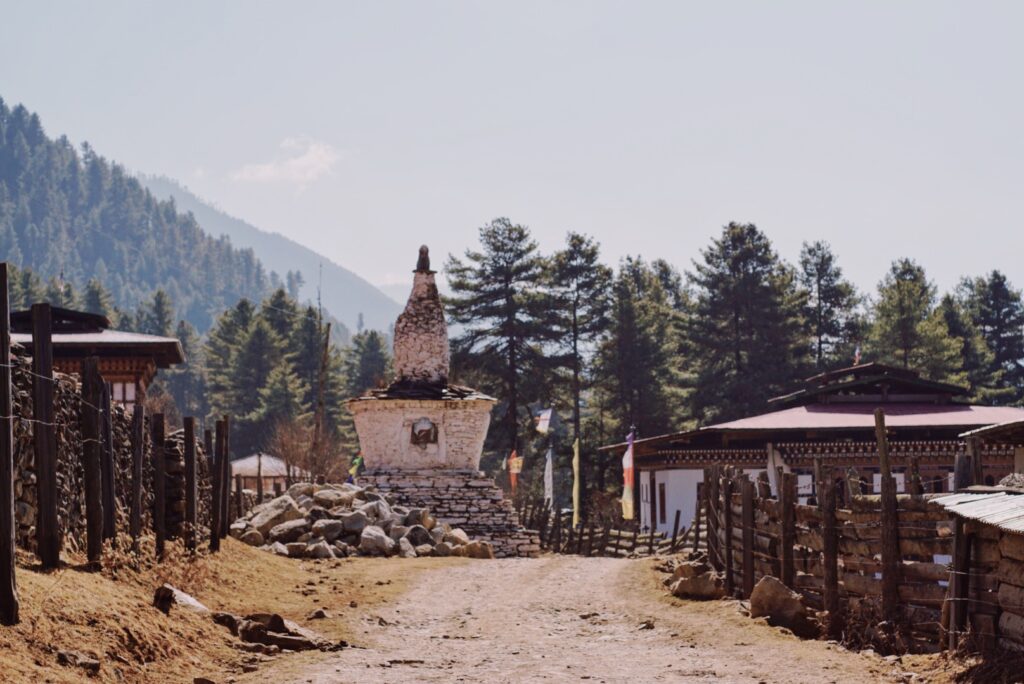
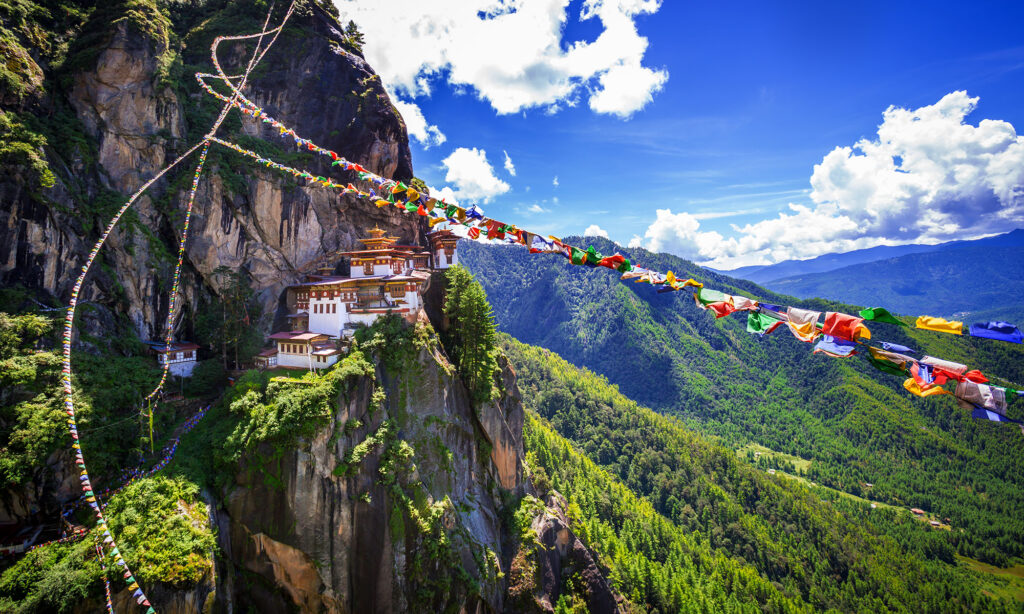
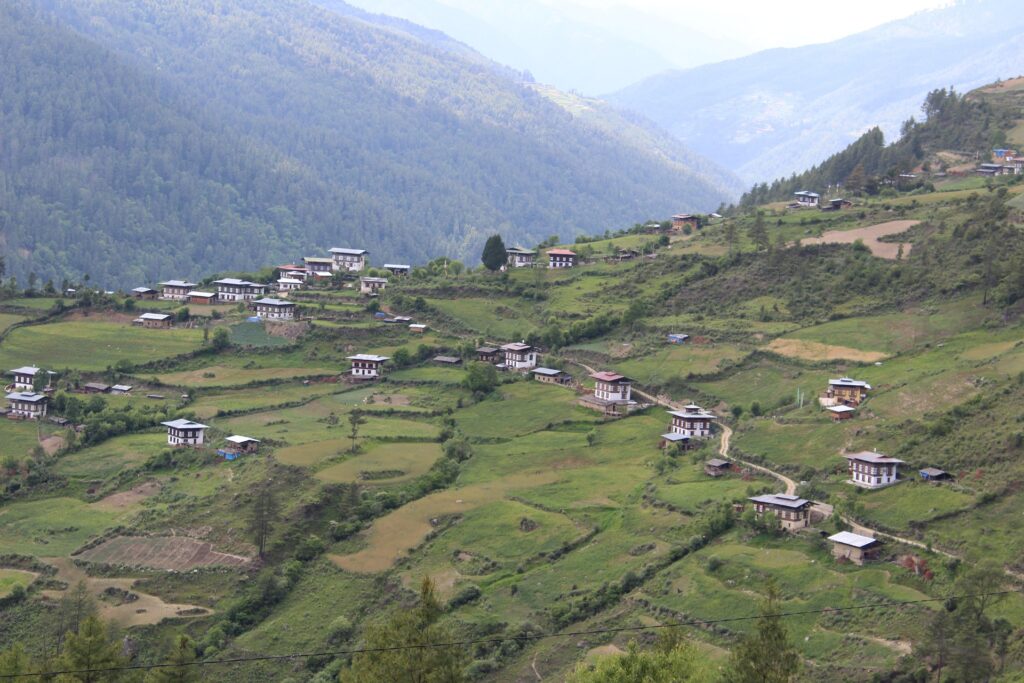
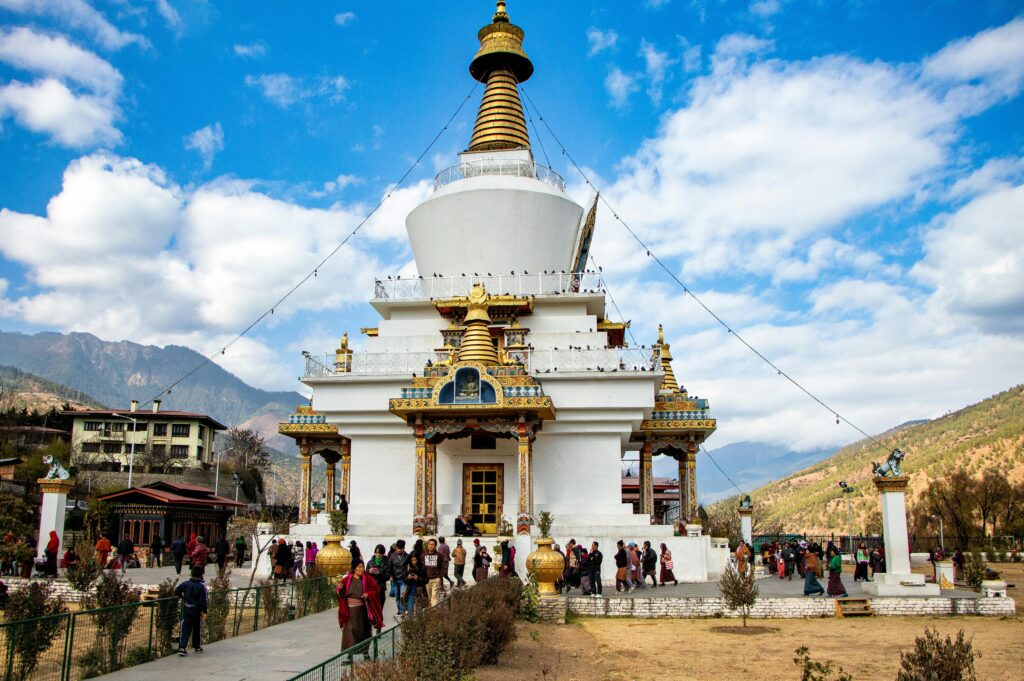
Leave a Reply
Your email is safe with us.